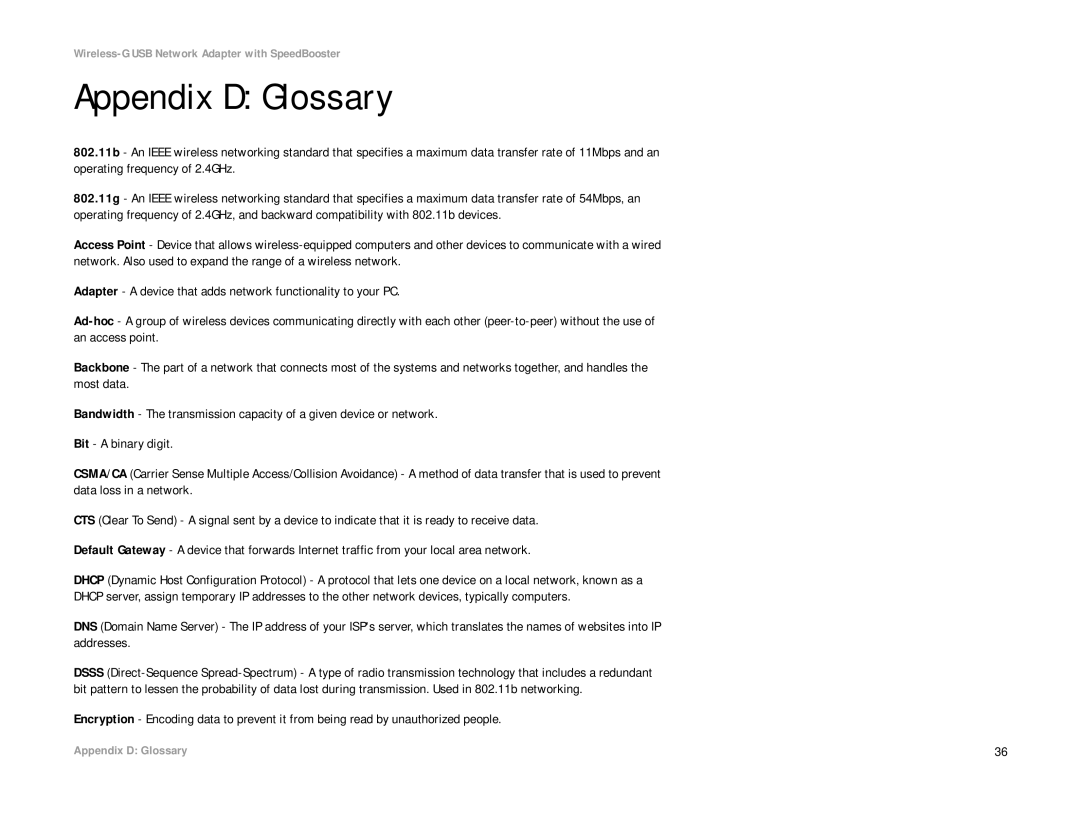Wireless-G USB Network Adapter with SpeedBooster
Appendix D: Glossary
802.11b - An IEEE wireless networking standard that specifies a maximum data transfer rate of 11Mbps and an operating frequency of 2.4GHz.
802.11g - An IEEE wireless networking standard that specifies a maximum data transfer rate of 54Mbps, an operating frequency of 2.4GHz, and backward compatibility with 802.11b devices.
Access Point - Device that allows
Adapter - A device that adds network functionality to your PC.
Backbone - The part of a network that connects most of the systems and networks together, and handles the most data.
Bandwidth - The transmission capacity of a given device or network.
Bit - A binary digit.
CSMA/CA (Carrier Sense Multiple Access/Collision Avoidance) - A method of data transfer that is used to prevent data loss in a network.
CTS (Clear To Send) - A signal sent by a device to indicate that it is ready to receive data.
Default Gateway - A device that forwards Internet traffic from your local area network.
DHCP (Dynamic Host Configuration Protocol) - A protocol that lets one device on a local network, known as a DHCP server, assign temporary IP addresses to the other network devices, typically computers.
DNS (Domain Name Server) - The IP address of your ISP's server, which translates the names of websites into IP addresses.
DSSS
Encryption - Encoding data to prevent it from being read by unauthorized people.
Appendix D: Glossary | 36 |
